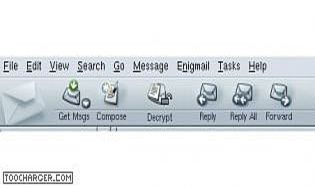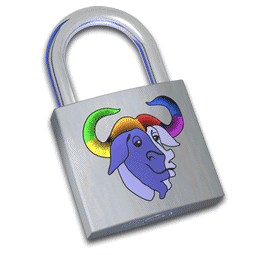
#Gnupg mac for mac
If that doesn't suit you, our users have ranked more than 10 alternatives to GPG4Win and eight of them are available for Mac so hopefully you can find a suitable replacement.
#Gnupg mac free
Hopefully I'll have a more interesting post next week, this week has just been insane for me. The best Mac alternative is GnuPG, which is both free and Open Source.
#Gnupg mac password
You should be prompted to type in your password and check the box to store it in your keychain. That's it! After sourcing your bashrc or zshrc ( source ~/.zshrc) or restarting your terminal, run a git commit. Paste these lines: if test -f ~/.gnupg/.gpg-agent-info -a -n "$(pgrep gpg-agent)" thenĮval $(gpg-agent -daemon -write-env-file ~/.gnupg/.gpg-agent-info) Vi ~/.profile # or other file that is sourced every time Pinentry-program /usr/local/bin/pinentry-mac You just have to setup pinentry so that you wont have to type your password on every commit. After running the above commands, git will sign commits with your key. Git config -global user.signingkey KEY_ID If you're confused about finding your key id, check step 11.Ĭopy the output from above and add it to GitHub With that being said, get started by having homebrew installed, and we'll go from there. I've followed a couple different guides across multiple computers to end up with a combination of them in this guide. Even if you follow the simple steps to generate one and let git know about it, you're going to be stuck typing a password on every commit if you don't setup an agent to handle adding it to your keychain for you. Setting up gpg keys can be a little annoying. The second reason is because you're reading this article! If you're not famous and aren't verified on Twitter, this feels almost as cool. See the page on PGP trust for more info.Īnyway, after you type 5 and answer y to confirm, you'll be back at the command> prompt and you can type quit to exit.I know you want to have a verified badge like this next to your commits on github. In fact, setting explicit trust like this is rarely done for keys other than your own. You shouldn't trust anyone else's key ultimately. (by looking at passports, checking fingerprints from different sources, etc.)īecause this is your key (and you should verify that it is your key by ensuring it's your name and email above), you should choose ultimate. Once installed you will see a menu containing the PGP functions, from there.
#Gnupg mac mac os
GPGMail is the front-end for GnuPG adding PGP functionality to Mac OS X’s MailViewer.app and Mail.app. GnuPG application is fully RFC2440 (OpenPGP) compliant. Because GnuPG does not use the patented algorithm (IDEA), it can be freely used without restrictions. Please decide how far you trust this user to correctly verify other users' keys What is GnuPG GnuPG is a cost free replacement for PGP. Type in the command trust and it will prompt you: Sub 2048g/DEADBEEF created: expires: usage: E Pub 1024D/BEEFF00D created: expires: usage: CS This is free software, and you are welcome to redistribute it GnuPG, also known as GPG, is a command line tool with features for easy integration with other applications. This program comes with ABSOLUTELY NO WARRANTY. GnuPG allows to encrypt and sign your data and communication, features a versatile key managment system as well as access modules for all kind of public key directories.
#Gnupg mac software
$ gpg -edit-key (GnuPG) 1.4.1 Copyright (C) 2005 Free Software Foundation, Inc. On the new machine:Įnsure that the Key ID printed is the correct one, and if so, then go ahead and add ultimate trust for it: Take the the two files, securely copy them to the new machine (it is unadvisable to ftp them or use plain-text protocols because even thought your private key there is encrypted with your passphrase, your passphrase is still the weakest link, and you want to avoid exposure to your private key wherever possible). Where keyid is your PGP Key ID, such as A1E732BB. $ gpg -export -a keyid > my_public_key.asc $ gpg -export-secret-keys -a keyid > my_private_key.asc If you'd just like to copy your keys over, first export them (as usual, we assume gpg is in your path): However, you may not want to bring all that trust data and lots of keys with you. This will also work between different operating systems.

Some examples might be zipping the data up and copying it to a disk.


There are many ways to move this data, which I won't cover. Just simply copy the entire contents of that directory from one machine to the other and you will be set.

Once you're using PGP, you may want be able to sign email from more than location, or you may switch computers.


 0 kommentar(er)
0 kommentar(er)
